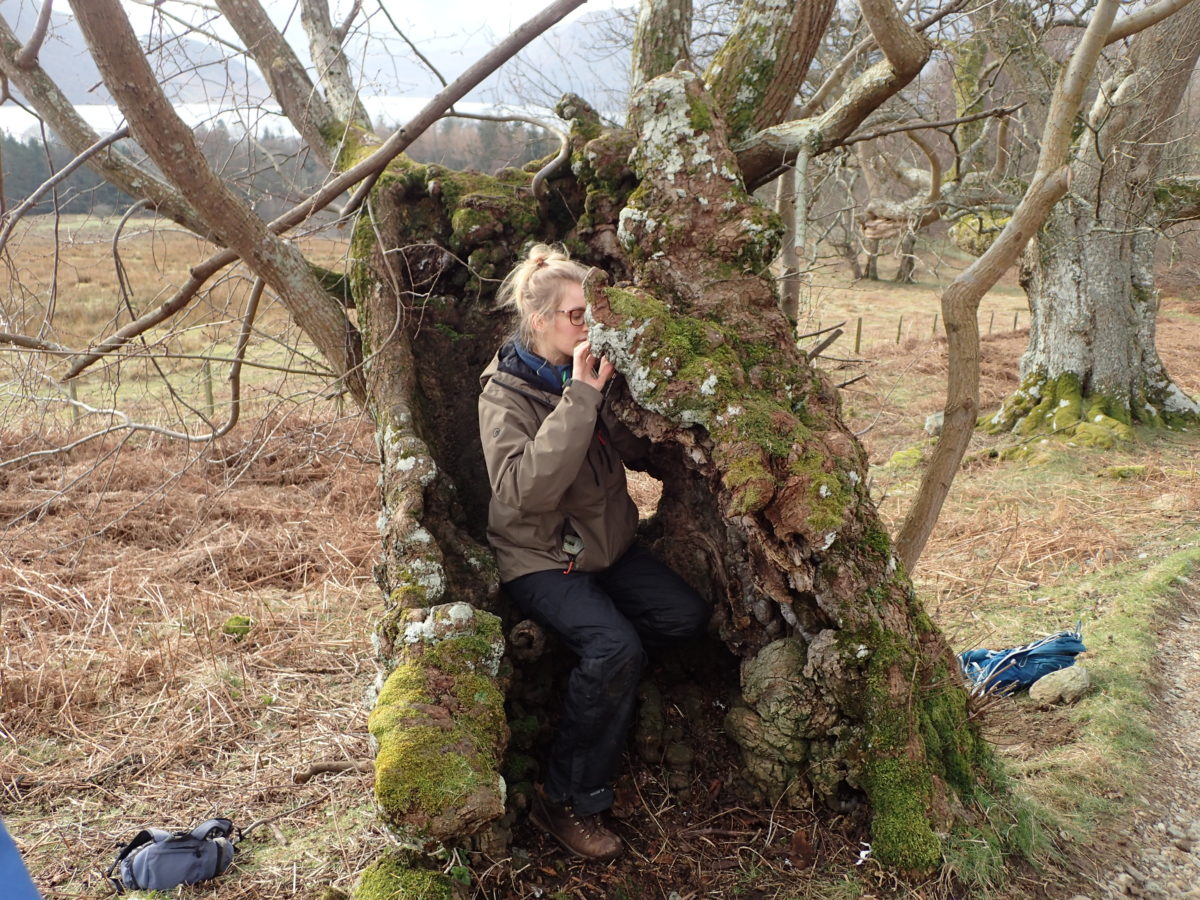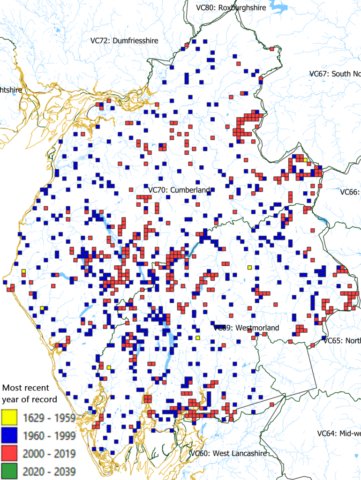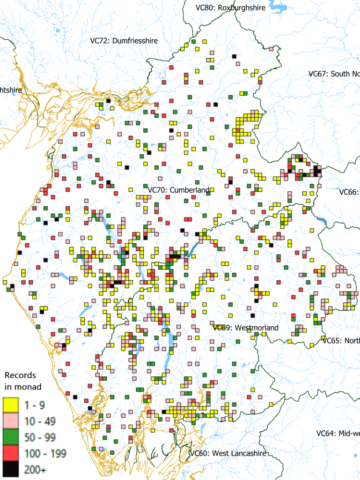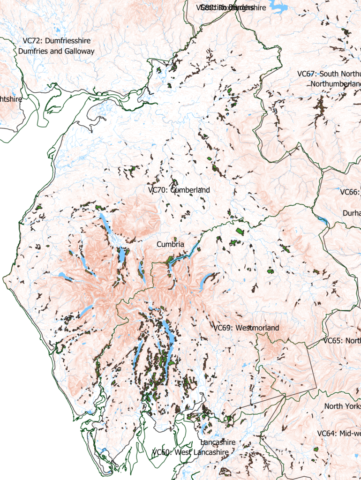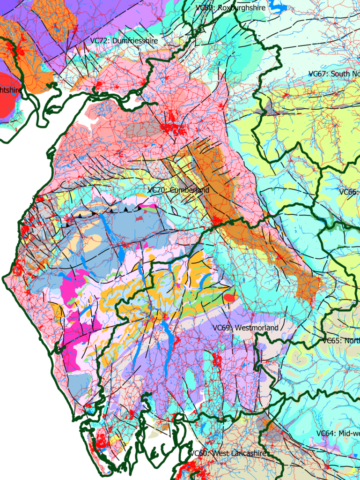- 56,980 lichen records from 1805 to January 2020
- Some are rare and internationally important
- Join the Cumbria Lichen and Bryophyte Group
- Lichens are long-lived and important indicators of biological continuity.
- Lichens grow on live bark, dead wood, soil and rock. Habitats include woods, dunes, parkland, becks, gates, dry-stone walls, fences, gravestones, mine spoil and pavements.
- Lichens need water and light to photosynthesise – eg look on sunny, south-facing aspects for Lobaria pulmonaria.
- Cumbria has a varied geology with ecological niches to accommodate almost all lichens, eg some lichens prefer base-rich rocks such as limestone and can be found in basic flushes on hills.
- The Lake District has important remnant Atlantic woodlands, also known as temperate rainforests, which are found in western Britain due to the oceanic climate eg in Borrowdale and Ullswater valleys.
- Tree bark pH indicates likely species: ash and elm are more basic; oak, birch and pine are more acidic.
- The fells are an important montane habitat in the Lake District and Pennines, with many inaccessible ghylls and crags, an under-recorded habitat.
- Lichens are sensitive to changes in their surrounding environment. In Cumbria, over time, composition and diversity has been impacted by air pollution (acidification/nutrient enrichment), habitat loss, invasive species (native/non-native) and unfavourable woodland management.
Data from British Lichen Society, Natural England, British Geological Society, Ordnance Survey and others – thanks. Maps made using QGIS.
